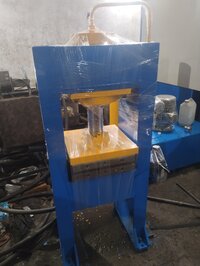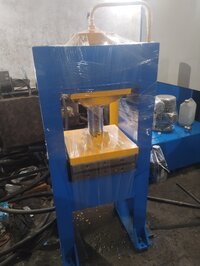Hydraulic Cylinder
Product Details:
- Temperature 0-80 Celsius (oC)
- Length 50-6000 Millimeter (mm)
- Size Customized
- Width 200 Millimeter (mm)
- Color Orange,Blue,White,Black,Green
- Height 200 Millimeter (mm)
- Weight 200 Kilograms (kg)
- Click to View more
Hydraulic Cylinder Price And Quantity
- 2 Piece
- 100000 INR/Piece
Hydraulic Cylinder Product Specifications
- 200 Millimeter (mm)
- Hydraulic
- Steel
- ID50 - ID 2000 Millimeter (mm)
- 200 Kilograms (kg)
- Piston Cylinder
- 5-200 Millimeter (mm)
- 50-500 Bar
- 20-1000 mm
- 6000 Millimeter (mm)
- 0-80 Celsius (oC)
- Sealed
- 30-1500 Millimeter (mm)
- Customized
- 50-6000 Millimeter (mm)
- 200 Millimeter (mm)
- Hydraulic Cylinder
- 5-1000 Ton Ton/day
- Industrial
- Orange,Blue,White,Black,Green
Hydraulic Cylinder Trade Information
- 50 Piece Per Month
- 10 Days
- All India
Product Description
A hydraulic cylinder is a linear actuator that converts hydraulic pressure into linear force and motion. It's essentially a tube with a piston inside that moves back and forth when hydraulic fluid is pumped into it. Hydraulic cylinders are used in a wide variety of applications, including construction equipment, agricultural machinery, manufacturing equipment, and even amusement park rides.
Here are the main parts of a hydraulic cylinder:
- Barrel: The main body of the cylinder, which is usually made of steel or aluminum.
- Piston: A moving disc or rod that fits inside the barrel and is connected to the load that the cylinder is moving.
- Piston rod: The rod that extends from the piston and is used to connect the cylinder to the load.
- Head and cap: The ends of the barrel, which are usually sealed to prevent hydraulic fluid from leaking out.
- Port: The opening in the barrel where hydraulic fluid enters and exits.
There are two main types of hydraulic cylinders:
- Single-acting cylinders: These cylinders have only one port, so they can only extend or retract in one direction. They are typically used for applications where only one direction of force is needed, such as opening a door or lifting a weight.
- Double-acting cylinders: These cylinders have two ports, so they can extend and retract in both directions. They are typically used for applications where both pushing and pulling forces are needed, such as operating a forklift or moving a machine arm.
Hydraulic cylinders can be classified into different types based on their design and function. Some common types include:
- Telescopic cylinders: These cylinders have multiple stages that extend and retract one inside the other, providing a longer stroke length in a compact package.
- Differential cylinders: These cylinders have two pistons with different areas, which allows them to generate different forces at different points in their stroke.
Hydraulic cylinders are a versatile and powerful tool that can be used in a wide variety of applications. They are relatively simple in design, but they can be used to create complex motions and generate large forces.

Price:
- 50
- 100
- 200
- 250
- 500
- 1000+








